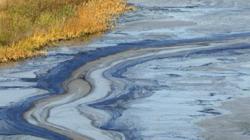
Hoboken, N.J. (PRWEB) July 01, 2013
Stevens Institute of Technologies launched TRACES, a new educational service and web site on environmental spill forecasting in and about the port of New York and New Jersey waters. In coordination with personnel from the National Oceanic and Atmospheric Administrations Office of Response and Restoration (NOAA OR&R) and the United States Coast Guard (USCG), Dr. Nickitas Georgas, Investigation Assistant Professor, and Dr. Alan Blumberg, Director of the Davidson Laboratory/Center for Maritime Systems (CMS), have combined the genuine-time extensive forecast model of ocean currents they have developed with the Common NOAA Operational Modeling Atmosphere (GNOME) to track the movement and fate of waterborne pollution, such as an oil spill.

The Emergency Response Division of NOAA OR&R and the USCG Workplace of Search & Rescue (USCG/SAR) have been utilizing Stevens New York Harbor Observing and Prediction Technique (NYHOPS) forecasts of ocean currents for drift simulations in assistance of pollutant tracking and search and rescue organizing, respectively, because 2006. The NYHOPS model that Georgas and Blumberg developed at CMS forecasts the evolution of the ocean current fields 72 hours in advance, subject to tides, atmospheric climate, and river and urban watershed discharges. The forecast currents are input into the NOAA GNOME software exactly where spill scenarios can be set up to:

Predict how currents and other processes may well move and spread oil spilled on the waters of the New York/New Jersey Harbor and surrounding ocean over the next two to three days
Discover how these predictions of exactly where and how oil may move are impacted by uncertainty in the NYHOPS forecasts for ocean currents and wind
See how spilled oil is anticipated to modify chemically and physically although it remains on the water surface (a process recognized as weathering).
Georgas and Dave Runnels, Senior Analysis Engineer at CMS, developed the new TRACES internet site, which includes how to motion pictures, that now allows anybody to:

Download GNOME
Download the latest NYHOPS model predictions for currents more than the next couple of days, and input them in GNOME
Describe a spill scenario by getting into data into GNOME.
GNOME then creates and displays an oil spill film displaying the predicted trajectory of the oil spilled in the scenario. In addition to this animation, GNOME estimates the amount of oil beached, nevertheless floating, or evaporated, at particular times. 1 can even use NYHOPS in GNOME to backtrack exactly where waterborne particles may have originated from, or forecast the transport of conservative substances such as floatable trash and other passive buoyant articles drifting with the surface currents.

Over the past a number of years, we and our colleagues have used GNOME and NYHOPS forecasts to inform occasion response in many occasions, mentioned Georgas. We are now opening up the service to any person interested, including 1st responders, NGOs, Riverkeepers and the basic public. Reports that have turn into obtainable in the aftermath of Hurricane Sandy speak of over 450,000 gallons of oil from numerous concurrent oil spills, three.5 billion gallons of untreated sewage, and an huge amount of floatable trash and marine debris entering our waters as a direct outcome of the storm. Gaining understanding of environmental processes to be prepared for future environmental cleanup efforts is one particular significant aim of this service.

NYHOPS TRACES is offered at http://www.stevens.edu/TRACES.

About Stevens Institute of Technology

Stevens Institute of Technologies, The Innovation University

